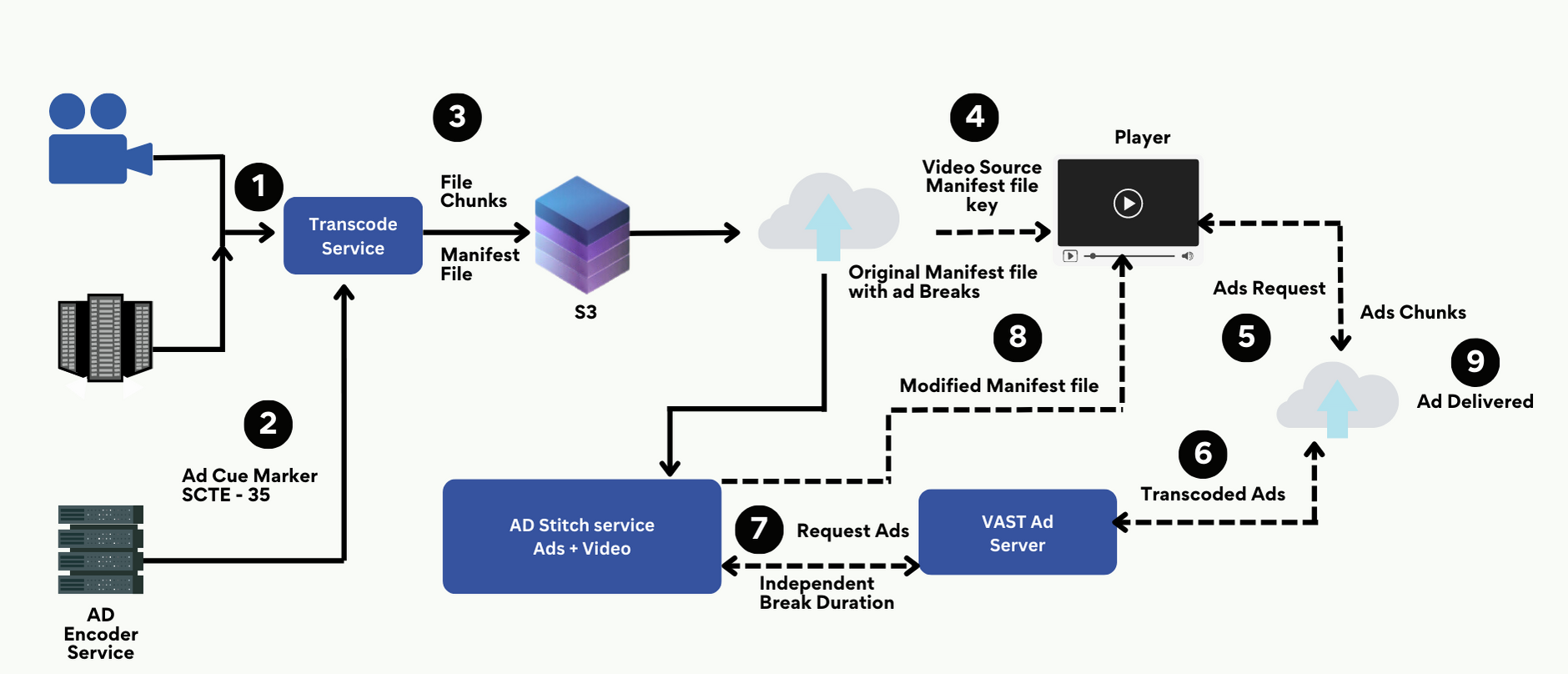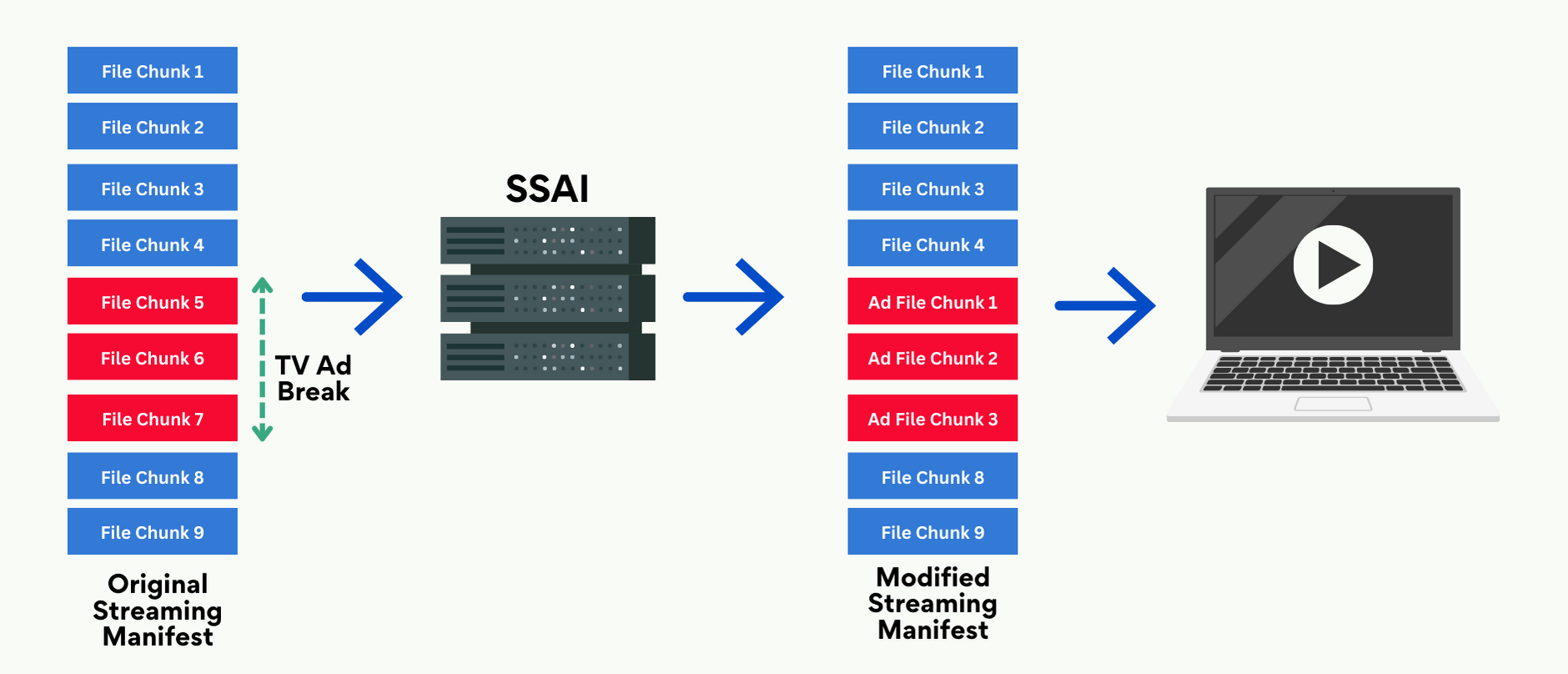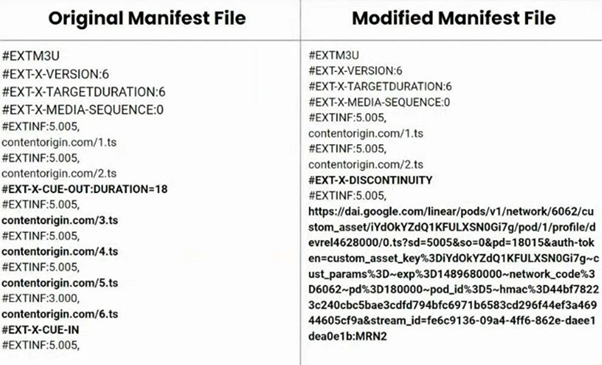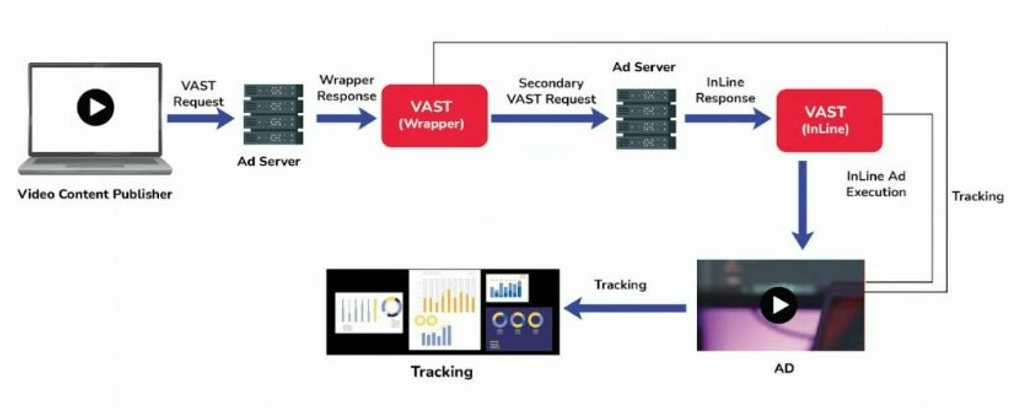solution Use Case
OTT Ad-Insertion
Cloud Services
file processing
OTT
Google

OTT Ad-Insertion is a technique for streaming ads into video content that viewers are streaming on connected TVs, smartphones, tablets, and other devices. The primary aim of this technique is to strategically show ads in a stream.
USE CASE DETAILS
 Types of ad placement
Types of ad placementMid-roll insertion: These ads appear in the middle of the content.
Pre-roll insertion: These ads are displayed before the main content starts playing.
Post-roll insertion: These ads play after the main content concludes.
Types of ad insertion
1. Server-Side ad insertion (SSAI)
2. Client-Side ad insertion (CSAI)
 1. Server-Side ad insertion (SSAI)
1. Server-Side ad insertion (SSAI)SSAI is a popular video-delivery technique that enables publishers to insert ads directly into their content steam.
How does SSAI work?
- The service provider inputs video content, whether it's pre-recorded or live, into a video encoder.
- Ad breaks are identified with start and end times within the content stream.
- Using encoding standards like SCTE-35/104, cues are inserted into the playlist at appropriate points to indicate ad placements.
- When the SSAI module detects an ad marker, it promptly sends an ad request to the ad decision server. This request includes personalized viewer data.
- The original manifest is modified using this personalized information.
- Targeted ad file chunks are inserted into the stream and stitched together with the video content.
- During ad breaks, the viewer's device receives a seamless stream of relevant ad chunks.
- Ad-related data such as views, impressions, and other information are collected and sent from the viewer's media player to tracking servers and ad partners.
 Benefits of SSAI
Benefits of SSAIReduced ad blocking: With SSAI, ads are delivered as part of the content stream, making them more difficult to block.
Improved ad targeting: SSAI's capabilities allow publishers to deliver targeted ads to specific viewers, improving engagement and generating higher revenue.
Increased ad revenue: SSAI leads to improved ad impressions and higher completion rates, ultimately resulting in increased ad revenue for publishers.
 2. Client-Side ad insertion (CSAI)
2. Client-Side ad insertion (CSAI)CSAI is a video-delivery technique that involves delivering ads to clients when the video player requests an ad from the ad server upon reaching a designated ad marker in the manifest.
How does CSAI work?
- The player downloads the manifest from the CDN and initiates the video playback. In the case of a pre-roll ad, the ad begins playing before the video content.
- When the video player reaches an ad marker, it makes an API call to the ad server to request an ad for playback.
- Typically, the ad server responds with a VAST XML that contains information about the ad, including the ad media, tracking details, and more.
- The video player uses the VAST tag and plays back the ad.
- After the ad playback, the video player resumes playing the main video stream.
- Streaming platforms usually embed their video players with SDKs.
- These SDKs track ad playback position, completion rates, errors, and more, periodically sending this information back to servers.
Benefits of CSAI
Higher fill rates: By fetching ads from multiple ad networks and exchanges, CSAI increases the likelihood of filling ad slots, resulting in higher fill rates and revenue for publishers.
Enhanced user experience: With CSAI, ads are loaded asynchronously, avoiding any impact on page load times and delivering a smoother user experience.
Real-time bidding integration: CSAI simplifies the integration of real-time bidding (RTB) platforms, facilitating more efficient and effective ad buying and selling processes.
3 thoughts on “OTT Ad-Insertion”
Leave a Reply
You must be logged in to post a comment.
Great use case and very interesting. But how Dataminer is applied? Management? Mnitoring? ad server and player integration? to which portion of usecase workflow dataminer has connectors?
HI Leonardo,
DataMiner is mostly used to monitor either the feeds for presence of the SCTE markers as required to enable the ad-insertion as well as the systems used to support the actual add-insertion. Both the protect the revenue stream associated with the add-insertion. In place integrations with multiple of the system suppliers already, we are committed to support all solution suppliers. See our driver catalogue (https://catalog.dataminer.services/?s=Name-Ascending) to find out if your add insertion product is integrated already. And know customers are charged for the use, rather then the development of the connector, so there is no financial penalty for you if your product would not yet be integrated.
I hope it helps, but please do not hesitate to come back for further help.
Thanks!! It is clear.